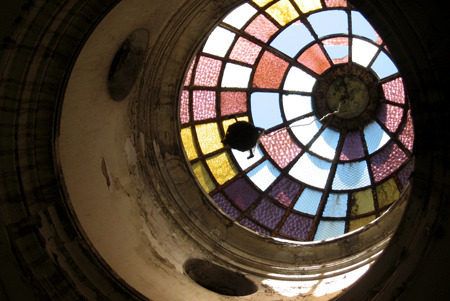
Documenting Recoleta Cemetery in Buenos Aires since 2007
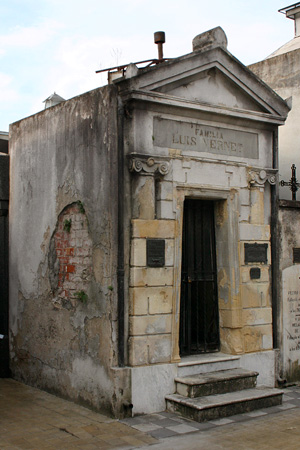
An official Argentine presence on the Falkland Islands can be traced back to the appointment of Luis Vernet as Governor of the Islas Malvinas in 1829:
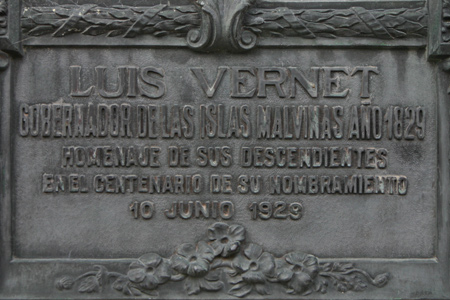
But a lot happened before Vernet arrived. Originally claimed by France, the islands were ceded to Spain in 1766. But straggling French colonists plus a few British ones made Spain uneasy. After armed conflicts, the British officially left the Falklands in 1776 & control passed to Buenos Aires—the new capital of the Viceroyalty of the River Plate formed that same year. Argentina continued to claim the islands as part of national territory after independence from Spain in 1816, but other matters were more pressing. As a result, no government official was sent to manage the scant number of people living there.
In 1820, an American privateer working on behalf of the Argentine government claimed the islands again for Argentina when he docked for repairs. Four years later, Luis Vernet made his first trip to the Falklands after being given a land grant on the eastern island. Various attempted settlements by Vernet failed, but finally a few brave people remained. Vernet governed from 1829 until an armed conflict with the US in 1831 forced his return to Buenos Aires.
Since Vernet governed on behalf of Argentina under supervision of the British, responsibility was usually shared… even if both governments claimed true ownership of the islands. After Vernet’s departure, his British deputy remained in charge which reinforces England’s current claim. Since the 1982 war, politicians from both the UK & Argentina often exchange political barbs whenever convenient.
The Vernet family vault shows obvious signs of neglect. The ashes of Luis & his wife take center stage while other family members are listed on the interior walls. If Argentina hopes for a peaceful return of the Malvinas, then the least they could do is pay for the restoration & maintenance of this vault. Only a few steps from the tomb of Eva Perón, it would attract the attention of every tourist:
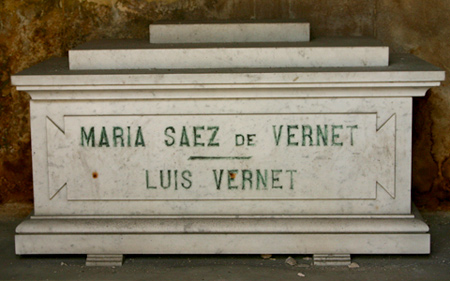
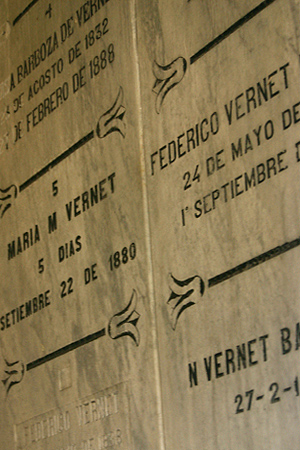
Ironically, the vault was made a National Historic Monument only in 1983… about one year after losing the war.
Update (21 Feb 2012): On a recent trip to San Isidro (40 min north of Buenos Aires by train), I came upon the former residence of Luis Vernet. Today the estate is called “La Porteña” & is in need of a better paint job, but a plaque remembers its previous owner. After returning from the Falklands, Vernet was the first mayor of San Isidro:
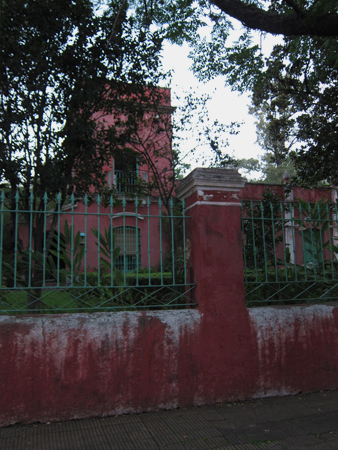
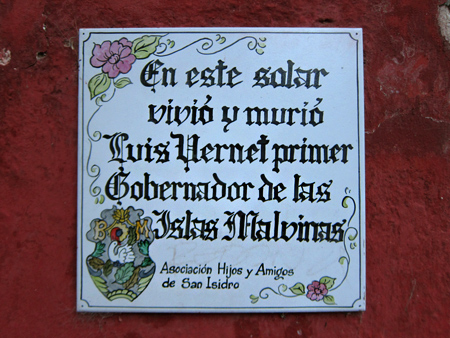
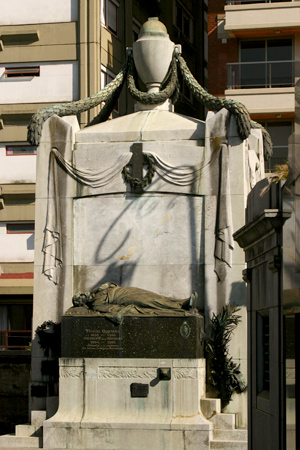
A life-long statesman, Quintana held a number of important positions during his political career, mainly in Congress. He eventually rose to be among the political elite & won the presidency in 1904. The following year, an uprising by the UCR got his term off to a shaky start. Already in his 70s, Quintana’s health was weakened by having to deal with the uprising. A few months later an anarchist from Spain tried to assassinate Quintana. The revolver failed to go off, but Quintana was so distraught from the incident that he eventually stepped down from office & his Vice President took over. Quintana died a few months later in 1906.
What’s most striking about this tomb is its grandeur & elegance. It’s so large that you really have to step back in order to appreciate the decoration. Also, the effigy of Quintana literally resting in peace is not common in Recoleta Cemetery. Sculptures usually take the form of the living person (as in the boxer Luis Ángel Firpo) or heavenly figures such as angels & cherubs. It’s certainly an elegant exception to the norm:
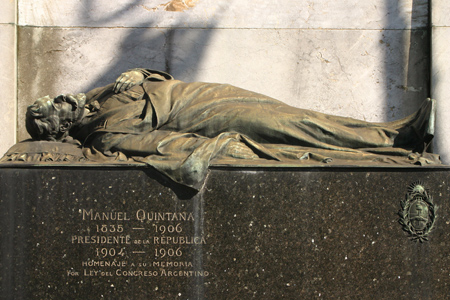
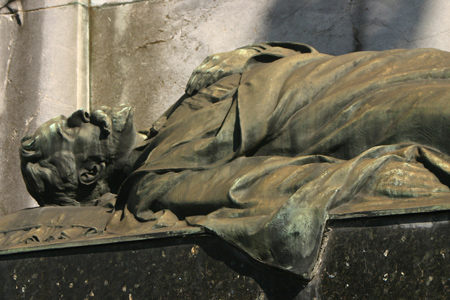
The interior of the vault is oddly divided. The left side door leads downstairs to dark underground storage. On the right side, another door opens to a small staircase leading up to the main altar. An Omega shines through a beautiful piece of Art Nouveau stained glass, while the Alpha is above the door & can only be viewed from the interior:
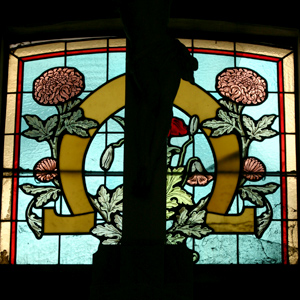
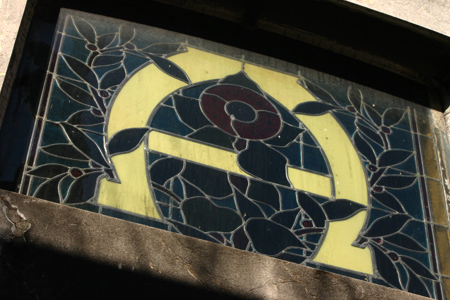
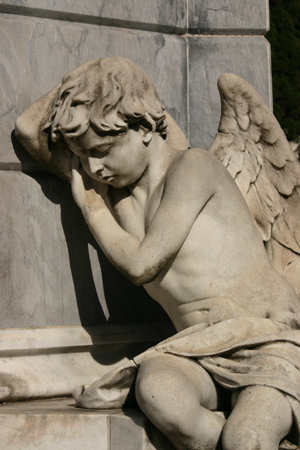
One of the most photographed statues in Recoleta Cemetery, mainly because of its innocence & its location… the Francisco Gómez family vault is on the junction of two broad walkways leading to the tomb of Eva Perón.
Leave a Comment